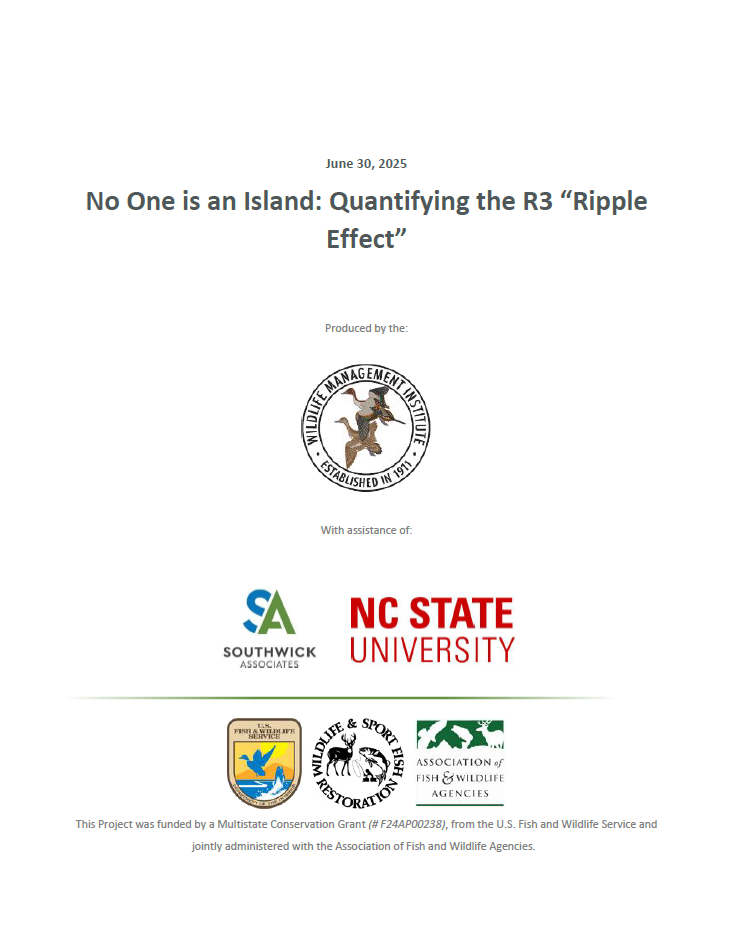
Recruitment, retention, and reactivation (R3) efforts and their evaluation have traditionally focused on outputs such as improved knowledge and skills, or sometimes outcomes such as the number of new recruits created by the effort or a change in participation rates (avidity). However, the historical focus on these direct impacts has meant that indirect impacts of R3 efforts remain poorly understood and garner little attention from either R3 practitioners or researchers. These indirect impacts, herein called ripple effects, describe the effects or influences a participant might have on other current or future participants.
Understanding the hunting “ripple effect” can help R3 practitioners measure the full impact of their programs and prioritize their efforts to maximize program reach. The goals of this project were to define and quantify the “ripple effect” of hunting. This was done over three phases, (1) interviews with R3 professionals, (2) focus groups with adult-onset hunters (those individuals who began hunting as adults), and (3) a survey of licensed hunters. Results indicate the average hunter talks to approximately 20 non-hunters about hunting, recruits 1.8 additional hunters and 7 new target shooters, and influences pro-conservation voting among their peers.
Read the full report below!
2025 Quantifying the R3 “Ripple Effect”
Send download link to:
